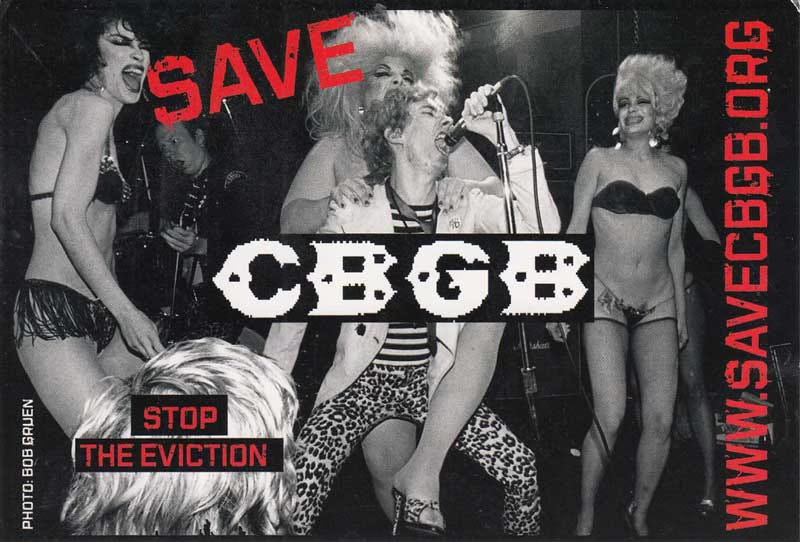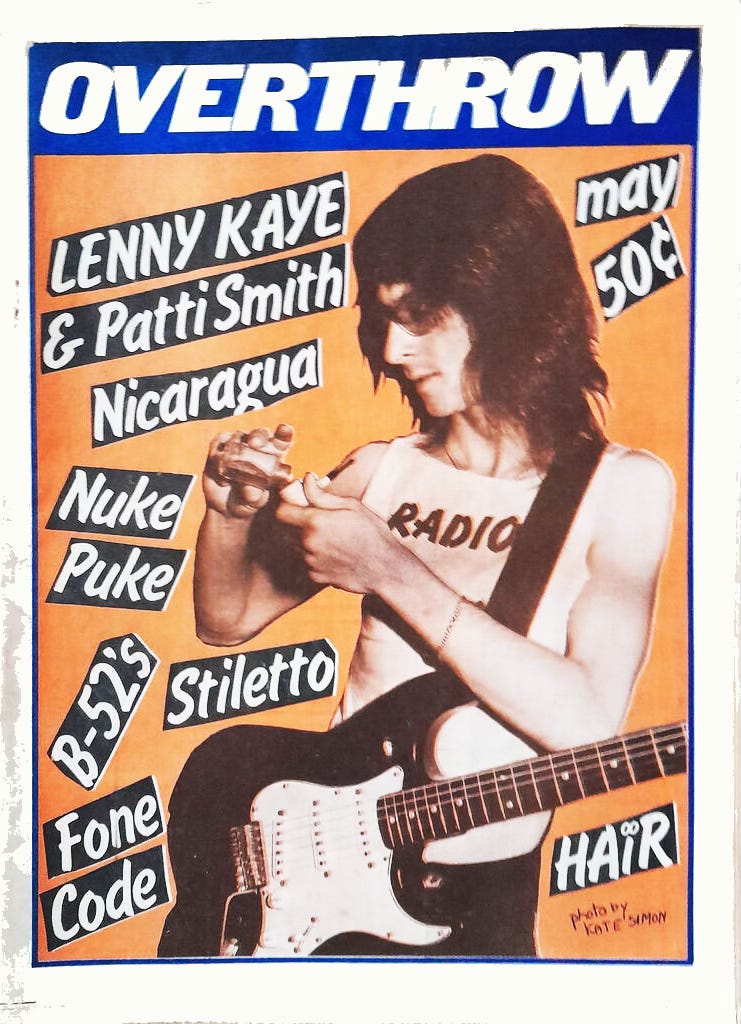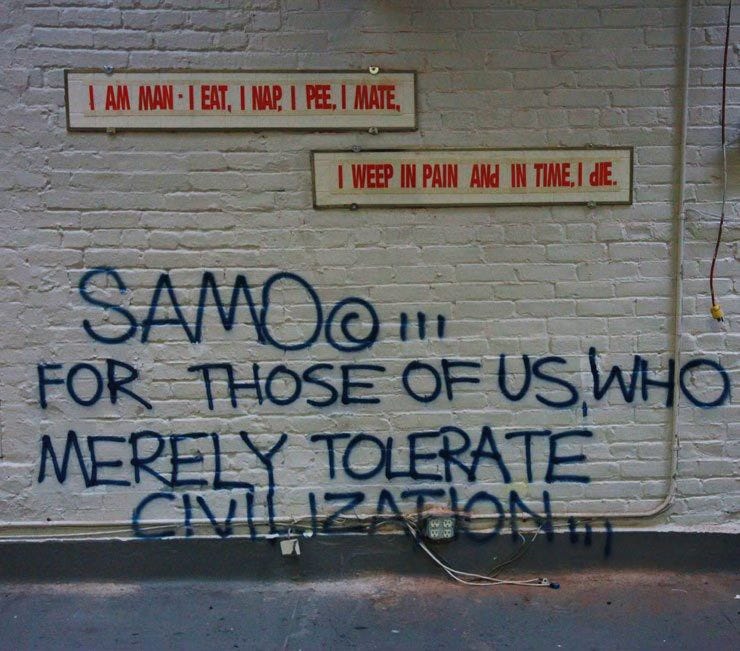ANNOUNCING: THE NEW YORK MUSEUM OF THE UNDERGROUND
This is the “Save 9 Bleecker Project” Project! (Since we couldn't "Save CBGB")
Oddly enough, I have ignited an attempt to put together a group to purchase a building on 9 Bleecker Street in Manhattan. Why would I do something so crazy, you might ask, since I am not a rich person? I ask myself the same question every day I work on this, so let me explain to everyone (including me!).
First off, I have to say that this is an urgent attempt to raise the funds to make this happen, so I set up a GoFundMe page to raise funds. Please share the link and donate if you can if you like the idea. We need to raise a lot of money! The $5,000 goal is just the beginning. Like the Save CBGB movement, we’re trying to raise money from all of the sources we can.
Unlike how CBGB’s landlord refused to extend the lease for CBGB 20 years ago? After I met with the brokers handling the sale of the building: Hey, they love the idea of a counterculture museum in the 9 Bleecker Street building and are working with us to make it happen. So all we need is a lot of public support.
LINK to GOFUNDME page:
https://www.gofundme.com/f/the-new-york-underground-museum-punk-lives

I was very involved with the SAVE CBGB movement in 2006. We wanted to preserve the club, but the landlord was totally opposed to it. As a result, we lost that cultural landmark. Years later, the Gem Spa (where the back cover of the first New York Dolls LP was shot) closed. And the Theater 80 on St. Marks Place near 1st Avenue is now closed. I could go over even more places the East Village has lost over time, everything from the Dojo restaurant to the Fillmore East.
All of these landmarks that have been a part of the East Village have disappeared over time. Now, you need to understand how New York City’s East Village has been very important to the development of America’s culture over the decades. This is why this project might catch on. For instance, several years ago there was a project to preserve the history of “New York City’s First Street”: The Windows On the Bowery. The Ramones at CBGB was featured as one of the most prominent events in the Bowery’s history!
LINK to Windows On The Bowery:
https://www.boweryalliance.org/
The East Village (and the Bowery in particular) has been home to so many subcultures, underground movements, and cultural happenings that our biggest task will be to represent all of them in the New York Museum of the Underground. But with all of the museums and cultural institutions located in New York City, it’s astonishing that there’s nothing preserving and promoting the underground culture that thrived here (before the rents went up in the late 1970s):
1. Bohemian Culture
Bohemian culture was first introduced to the USA at Pfaff’s Saloon, which was located at Broadway, just above Bleecker Street, by a guy named Henry Clapp, Jr. He published Saturday Press in the 1850s. This was the beginning of the first counterculture in the United States, and created the first alternative lifestyle. Walt Whitman and Fitz Hugh Ludlow hung out at the bar. It was the CBGB of the East Village back in the day.
LINK to Pfaff’s:
https://en.wikipedia.org/wiki/Pfaff's
2. Dada and the Avant Garde
The first modern art movement (which originated in Europe) held the first large exhibition in 1913 at the Armory Show (Lexington Avenue between 25-26th Streets, not too far from New Yorks downtown area: below 14th Street). The primary artists were Marcel Duchamp, Francis Picabia, Man Ray, Beatrice Wood and Louise Norton among many others. The famous New York New Wave exhibition, which made artists like Basquiat, Haring and others has been called “The Armory Show of the 1980s.”
LINK: https://artnewyork.org/programs/new-york-new-wave-at-ps-1-the-armory-show-of-the-80s/

3. Jazz Music
Although jazz music originated in New Orleans, it quickly spread the New York City. New York jazz musicians include Louis Armstrong, Duke Ellington, Ella Fitzgerald, Billie Holiday, Nat King Cole and Lena Horne. The Five Spot Cafe was located on the Bowery and then moved to St Marks Place, and hosted cutting-edge bebop and progressives jazz musicians as well as many avant-garde artists and writers. For instance, the Charlie Parker House is located on 151 Avenue B, next to Tompkins Square Park. It’s where many famous jazz musicians practiced, and it’s on the list of the National Register of Historic Places, and The Charlie Parker Jazz Festival has been happening in Tompkins Square Park for over 30 years.
5. 1950s The Beat Movement
The phrase “Beat Generation” was first used by Jack Kerouac in 1948 to characterize the underground, anti-conformist youth gathering in New York City at that time. His friends and fellow writers included Allen Ginsberg, William Burroughs and Neal Cassady. Kerouac and Ginsberg hung out at New York jazz clubs such as the Royal Roost, the Five Spot and Birdland, checking out jazz bands like Charlie Parker, Dizzy Gillespie and Miles Davis.
Beatnik art was another part of beat culture, represented by artists such as Robert Frank, Claes Oldenburg and Larry Rivers. A favorite hangout for beatniks was the Cedar Street Tavern (located on 55 West 8th Street), where creatives such as Jackson Pollock, Willem de Kooning, Franz Kline, John Cage and others involved with the New York School gathered.

6. The Hippie Movement
Hippies HATED New York City! They all wanted to do was “live in nature” and “get back to the land” and stuff like that. New York City is the last place you can live that kind of lifestyle, right? But there was a lot of psychedelic counterculture in the East Village (and nowhere else in NYC, really). There were clubs like The Electric Circus on St. Marks Place, Ed Sanders’ of The Fugs’s Peace Eye Bookstore and his Fuck You Press, and a myriad of hippie clothing boutiques, bookstores and record stores in the East Village. New York City bands from that era (The Velvet Underground, The Fugs, Silver Apples, David Peel and the Lower East Side) were definitely not hippies. New York City was the opposite of the San Francisco hippie scene. Nobody wore flowers in their hair, and walking around barefoot? On New York City sidewalks? Before the “Pooper Scooper Law"? Fuggedaboutit.

7. The Yippies
The 1960s/early 1970s hippie counterculture was best represented in New York City by The Yippies. They were in-your-face political activists instead of peaceful hedonists. The building hosted a series of outlaw politicos from the ‘60s to the ‘70s: the Provos, the Diggers and ultimately, the Yippies: the Youth International Party. “Groucho Marxists and John Leninists,” led by Dana Beal, controlled the building for the next 40 years, publishing their radical newspapers The Yipster Times and Overthrow. After they left the building in 2012 the Overthrow boxing club was located there, where their crew kept the spirit of New York’s underground scene alive. The Yippies are also an important past of PUNK Magazine history, since Tom Forcade (founder of High Times magazine and a Yippie who turned “Zippie” when the Yippies became too “establishment”). Forcade supported and financed PUNK magazine: especially during the Sex Pistols tour documentary that became the D.O.A.: A Rite of Passage film. We hope to bring back the Yippie cafe and to run a cannabis dispensary at 9 Bleecker.
LINK to the Yippie Museum: https://classicnewyorkhistory.com/history-of-the-new-york-yippie-museum-movement/

8. Punk Rock
Punk rock was established at CBGB, a dive bar located at the Bowery and Bleecker Street, just down the street from 9 Bleecker. The Joey Ramone street sign is still located on the Bowery and East 2nd Street. There’s also a street mural on Bleecker Street that has hosted images of Joey Ramone, Blondie and currently the Bad Brains. Obviously, there’s a demand to recognize the unique history of the neighborhood in that area. As far as CBGB’s place in music history is concerned? I’m sure you know about it. And since I am involved in this thing? Don’t worry. New York City and punk rock will be well-represented at the New York Museum of the Underground. We just have to make this happen!
9. The East Village Art movement
Basquiat hung out at the Mudd Club and spray-painted his SAMO graffiti with Al Diaz all over the East Village back in the day, with Richard Hambleton adding his shadow paintings around the same time. Keith Haring and Kenny Scharf got their art started at Club 57 on St. Marks Place. The building where Basquiat lived (courtesy of Andy Warhol) is located on 57 Great Jones Street, just a few blocks above 9 Bleecker Street.
In my opinion, there should be an institution devoted to all of the underground cultural movements that have taken root in the East Village, and 9 Bleecker is the best place to make it happen. So get involved if you can, we need all the help we can get! We need to establish an institution like this that will preserve all of the underground scenes that took place in downtown New York City (especially around the Bowery) before it’s forgotten.











Yes, and so did Roberta Bayley, I think, and Arturo Vega, and a lot of East Village artists. Heck, Diego even wrote about seeing "Rock 'N' Roll High School" for PUNK #18 (the issue that killed the magazine!).
Thanks! It's a long shot, but a lot of people would like to make this happen.